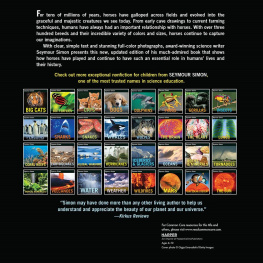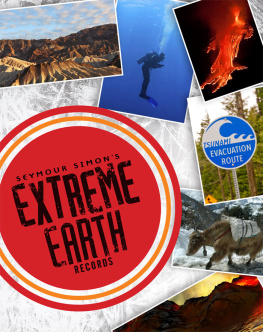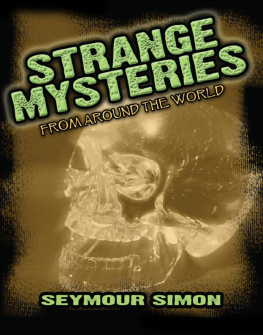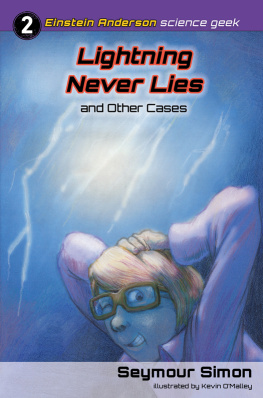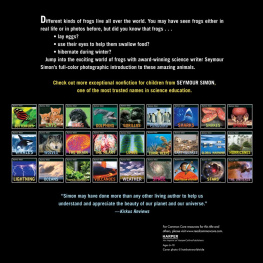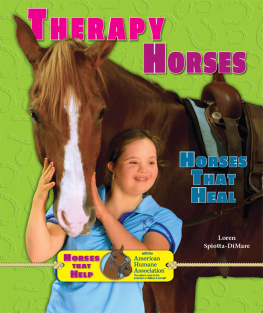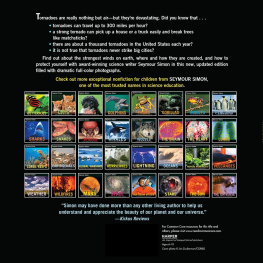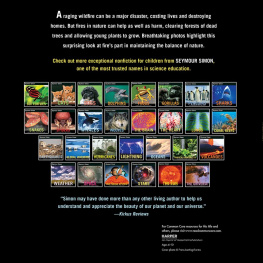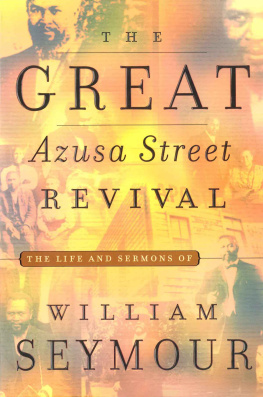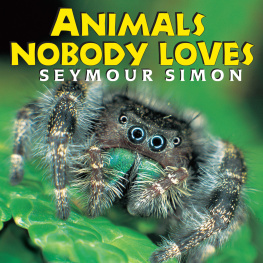Seymour Simon - Horses
Here you can read online Seymour Simon - Horses full text of the book (entire story) in english for free. Download pdf and epub, get meaning, cover and reviews about this ebook. year: 2017, publisher: HarperCollins Publishers, genre: Art. Description of the work, (preface) as well as reviews are available. Best literature library LitArk.com created for fans of good reading and offers a wide selection of genres:
Romance novel
Science fiction
Adventure
Detective
Science
History
Home and family
Prose
Art
Politics
Computer
Non-fiction
Religion
Business
Children
Humor
Choose a favorite category and find really read worthwhile books. Enjoy immersion in the world of imagination, feel the emotions of the characters or learn something new for yourself, make an fascinating discovery.
- Book:Horses
- Author:
- Publisher:HarperCollins Publishers
- Genre:
- Year:2017
- Rating:3 / 5
- Favourites:Add to favourites
- Your mark:
- 60
- 1
- 2
- 3
- 4
- 5
Horses: summary, description and annotation
We offer to read an annotation, description, summary or preface (depends on what the author of the book "Horses" wrote himself). If you haven't found the necessary information about the book — write in the comments, we will try to find it.
Horses — read online for free the complete book (whole text) full work
Below is the text of the book, divided by pages. System saving the place of the last page read, allows you to conveniently read the book "Horses" online for free, without having to search again every time where you left off. Put a bookmark, and you can go to the page where you finished reading at any time.
Font size:
Interval:
Bookmark:

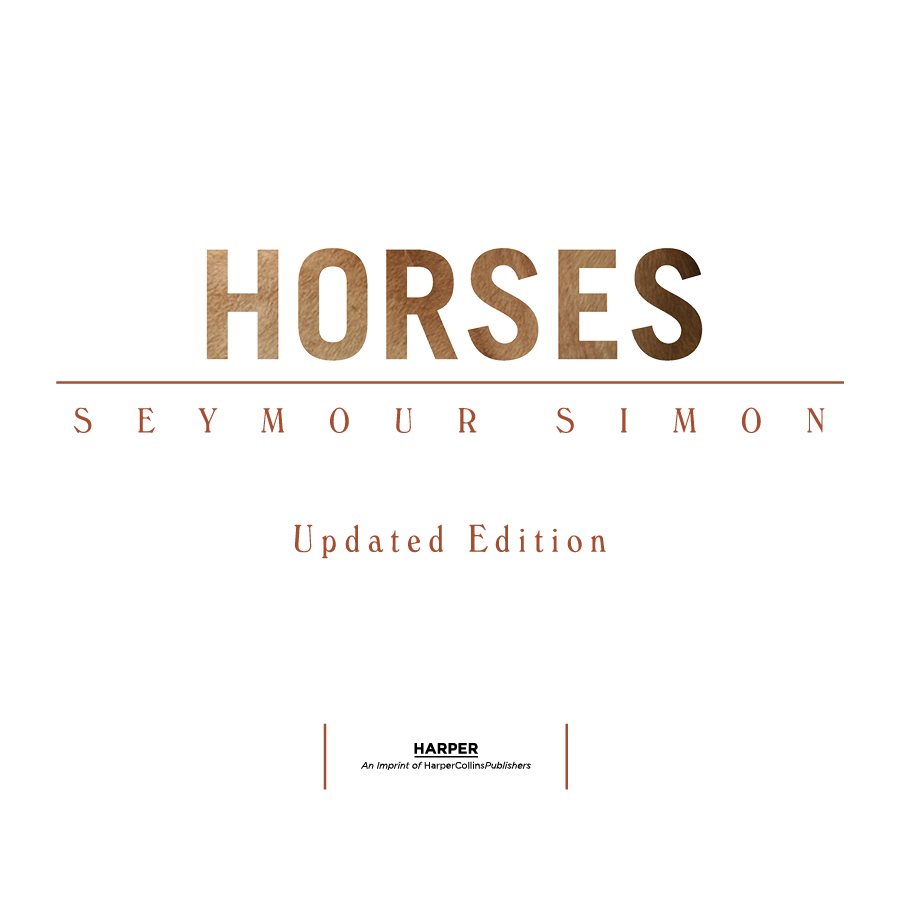
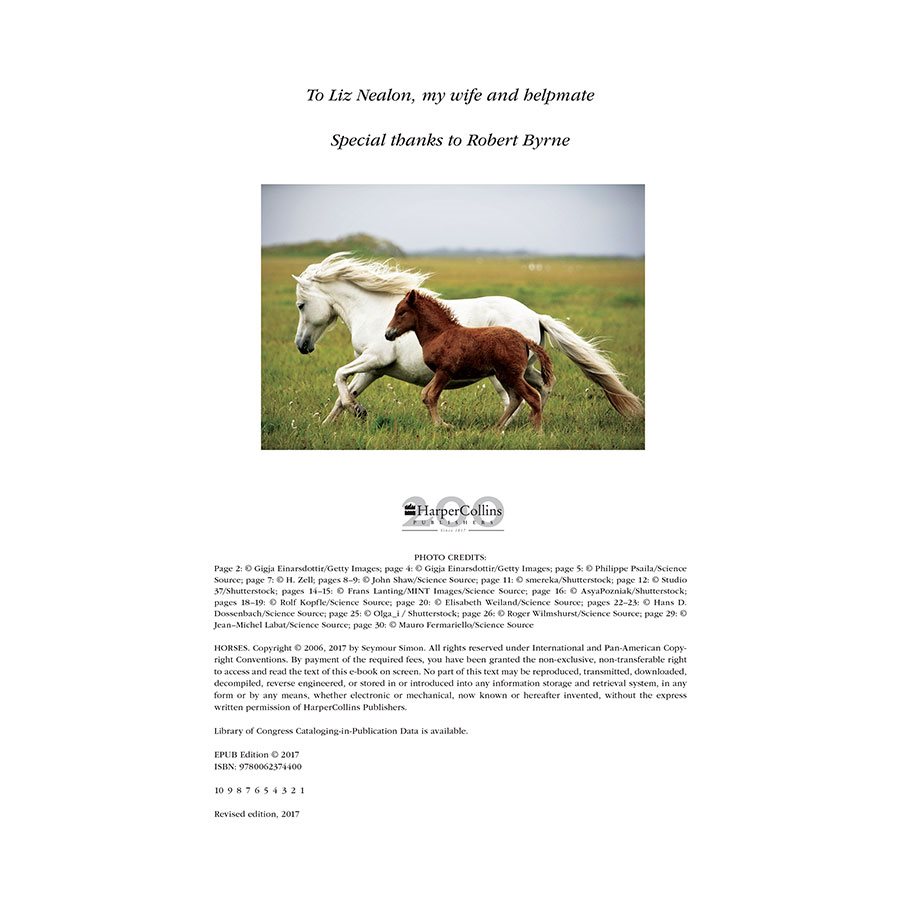

Authors Note
From a young age, I was interested in animals, space, my surroundings all the natural sciences. When I was a teenager, I became the president of a nationwide junior astronomy club with a thousand members. After college, I became a classroom teacher for nearly twenty- five years while also writing articles and books for children on science and nature even before I became a full- time writer. My experience as a teacher gives me the ability to understand how to reach my young readers and get them interested in the world around us.
Ive written more than books, and Ive thought a lot about different ways to encourage interest in the natural world, as well as how to show the joys of nonfiction. When I write, I use comparisons to help explain unfamiliar ideas, complex concepts, and impossibly large numbers. I try to engage your senses and imagination to set the scene and to make science fun. For example, in Penguins, I emphasize the playful nature of these creatures on the very first page by mentioning how penguins excel at swimming and diving. I use strong verbs to enhance understanding. I make use of descriptive detail and ask questions that anticipate what you may be thinking (sometimes right at the start of the book).
Many of my books are photo- essays, which use extraordinary photographs to amplify and expand the text, creating different and engaging ways of exploring nonfiction. Youll also find a glossary, an index, and website and research recommendations in most of my books, which make them ideal for enhancing your reading and learning experience. As William Blake wrote in his poem, I want my readers to see a world in a grain of sand, / And a heaven in a wild flower, / Hold infinity in the palm of your hand, / And eternity in an hour.
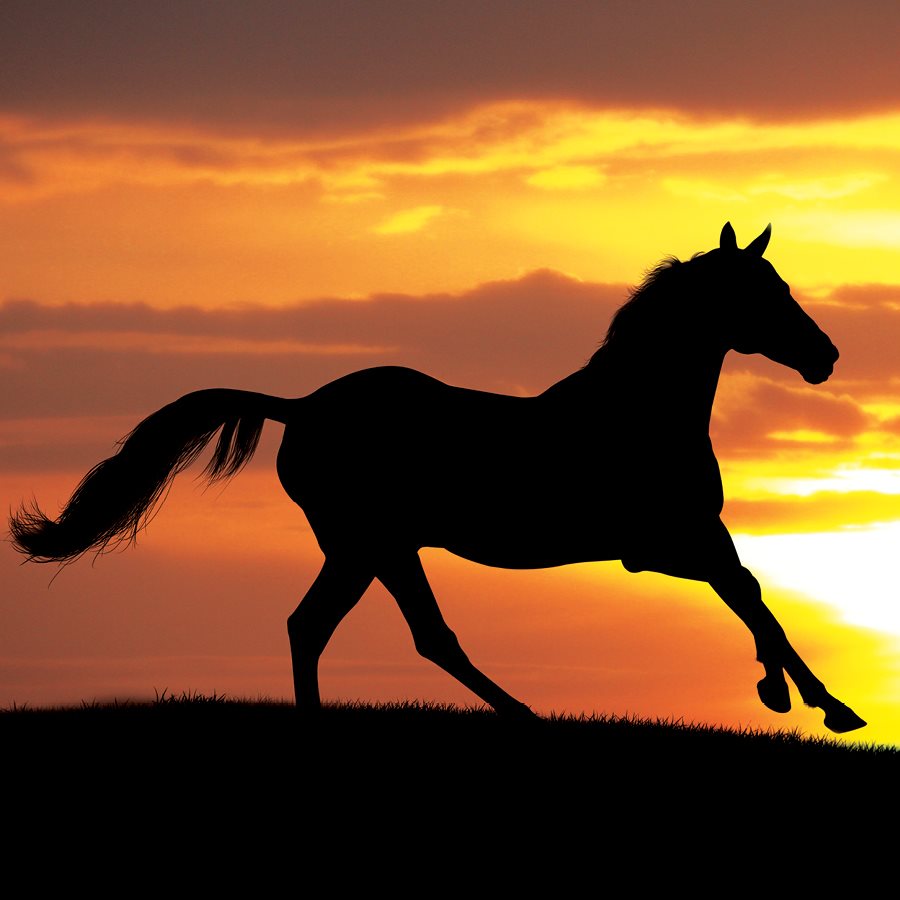
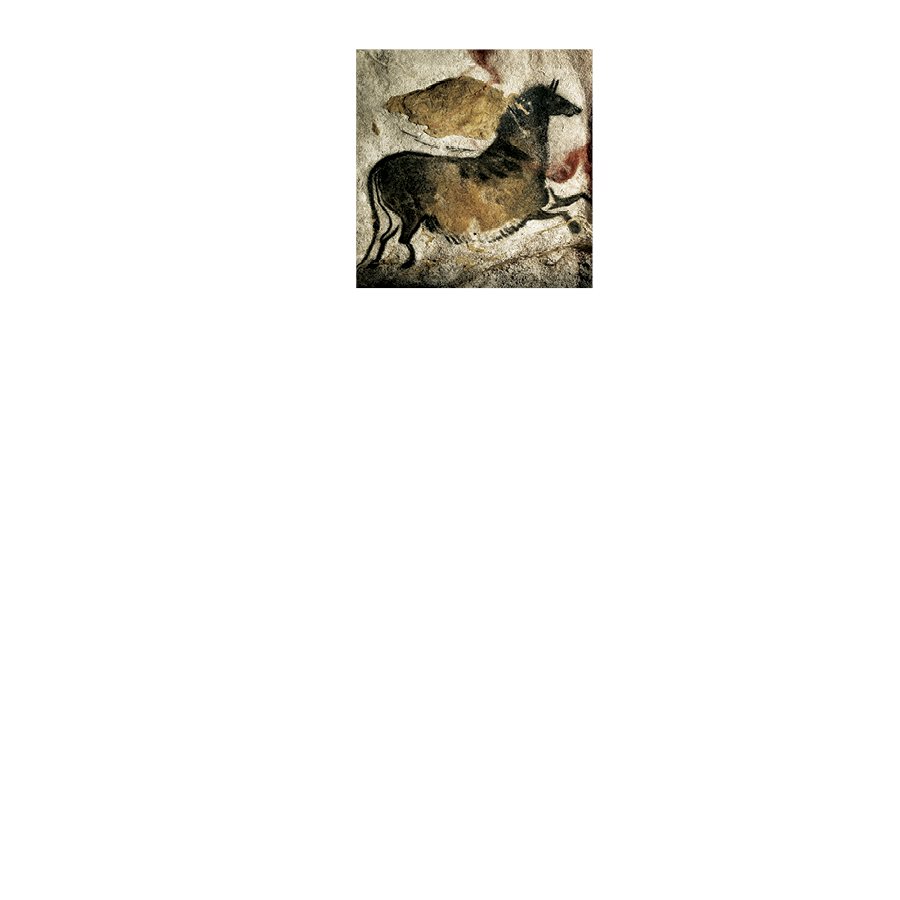
H orses have always been very much a part of human life. During the last Ice Age, tens of thousands of years ago, people made cave drawings of horses. Today people create movies and books about horses.
More than five thousand years ago, early peoples tamed and herded horses on the grassy plains of Europe and Asia. During the ancient Babylonian, Greek, and Roman civilizations, people trained horses to draw their war chariots. Genghis Khan conquered Asia and eastern Europe with an army of a quarter of a million horsemen. Horses carried medieval knights and their armor into battle. The cowboys, the Native Americans of the western plains, and their horses were an important part of American history.

T he ancestor of the horse, Hyracotherium, which means mole beast, lived about fifty- five million years ago in the forests of what is now Europe and eastern Asia. It looked only slightly like the horses we know today. It was about the size of a spaniel and ate the leaves of trees. This small horse is also called Eohippus, which means dawn horse.
Over tens of millions of years, horses slowly changed. Mesohippus, which means middle horse, was the size of a large dog, about two feet high. It ate both tree leaves and grasses.
About ten million years ago, the first single- toed, or single- hoofed, horse roamed the plains of Europe and Asia. It was about as big as a pony and ate only grasses. Equus, the modern- day horse, appeared about two million years ago and is now found over much of the world.
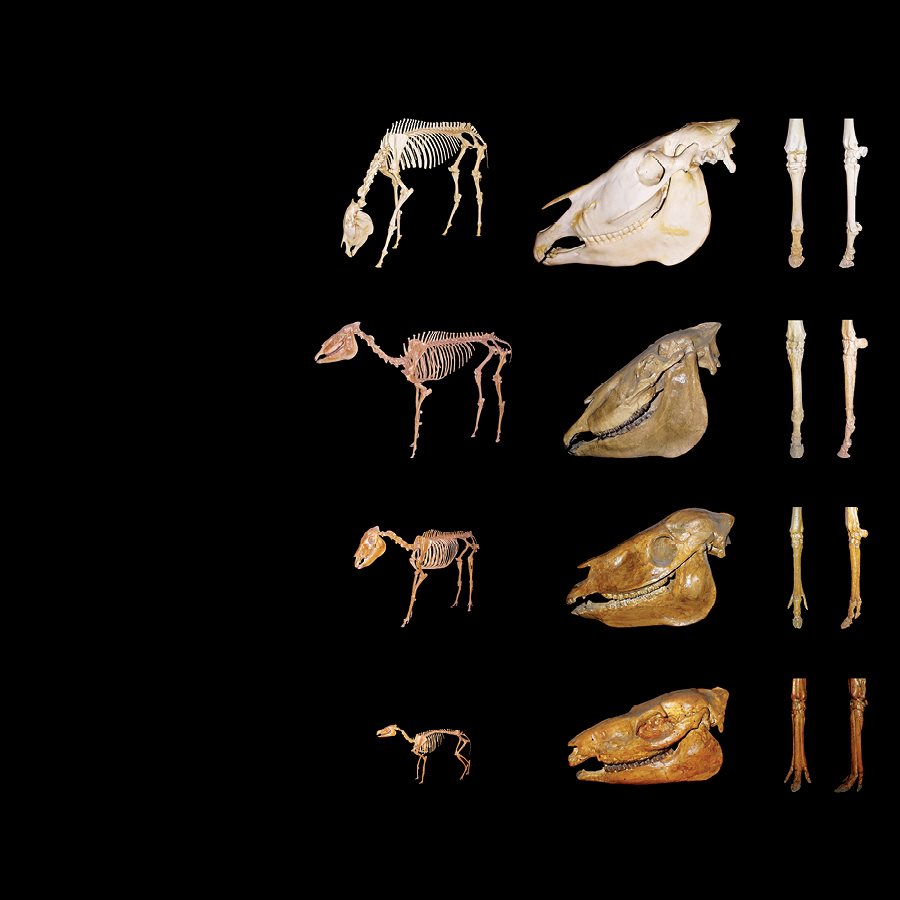
Equus
Recent
Pliohippus
Late Miocene
Merychippus
Middle Miocene
Mesohippus
Late Eocene
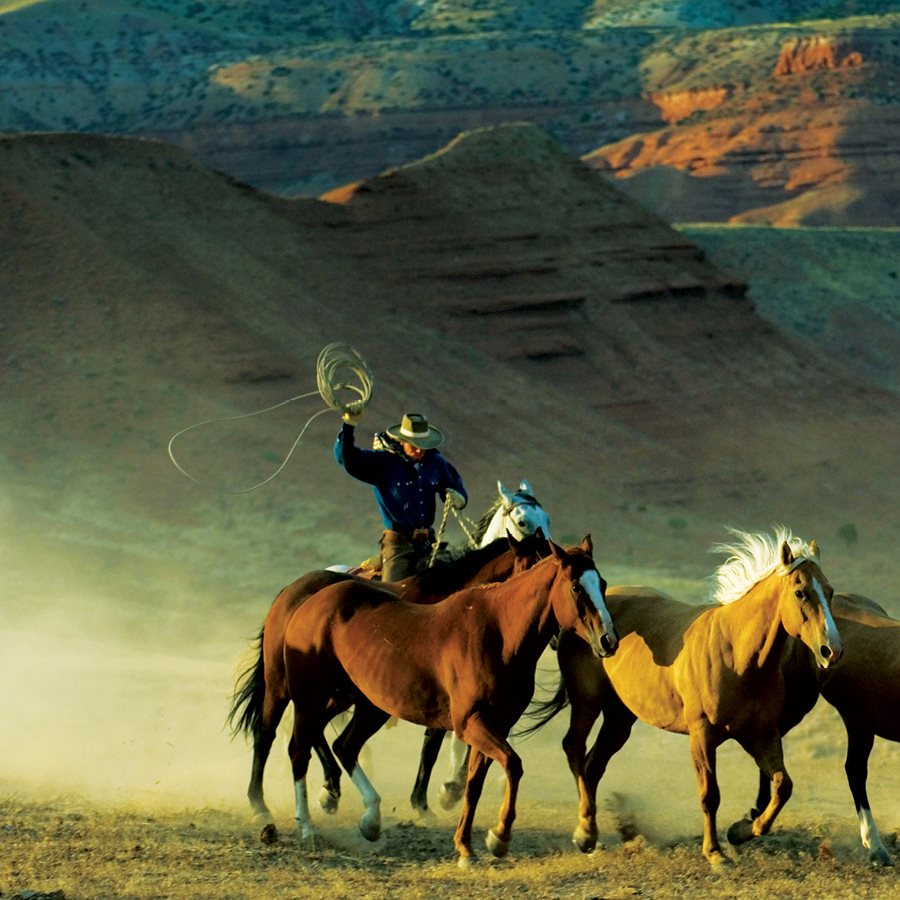
A round five hundred years ago, horses were brought to America by Spanish explorers. The Europeans used their horses to help battle the Native Americans and for trading purposes. Some horses escaped and lived in the wild.

By the 1600s, wild horses had spread over much of the American grasslands. Native Americans from the Sioux, Cheyenne, Comanche, Crow, and Pawnee peoples became the mounted buffalo hunters and warriors of the Great Plains. They could shoot arrows while galloping bareback on their horses and were excellent riders. So were the cowboys of the Old West.

I n the 1800s, horses were used to transport settlers traveling westward across America in wagon trains, groups of horse- drawn covered wagons called prairie schooners. For centuries, horses have played a vital role in American history.
For instance, modern industry would not have been possible without the use of horsepower. Before the invention of steam engines and gasoline engines, horses turned the wheels that provided power for machines in factories. This is how products such as cotton materials, flour, and iron were manufactured.
Today, machines mainly do the work that horses once did. But horsepower is still the term used to measure the pulling strength of a car, train, or plane engine. It seems that horses will always be with people in one way or another throughout time.
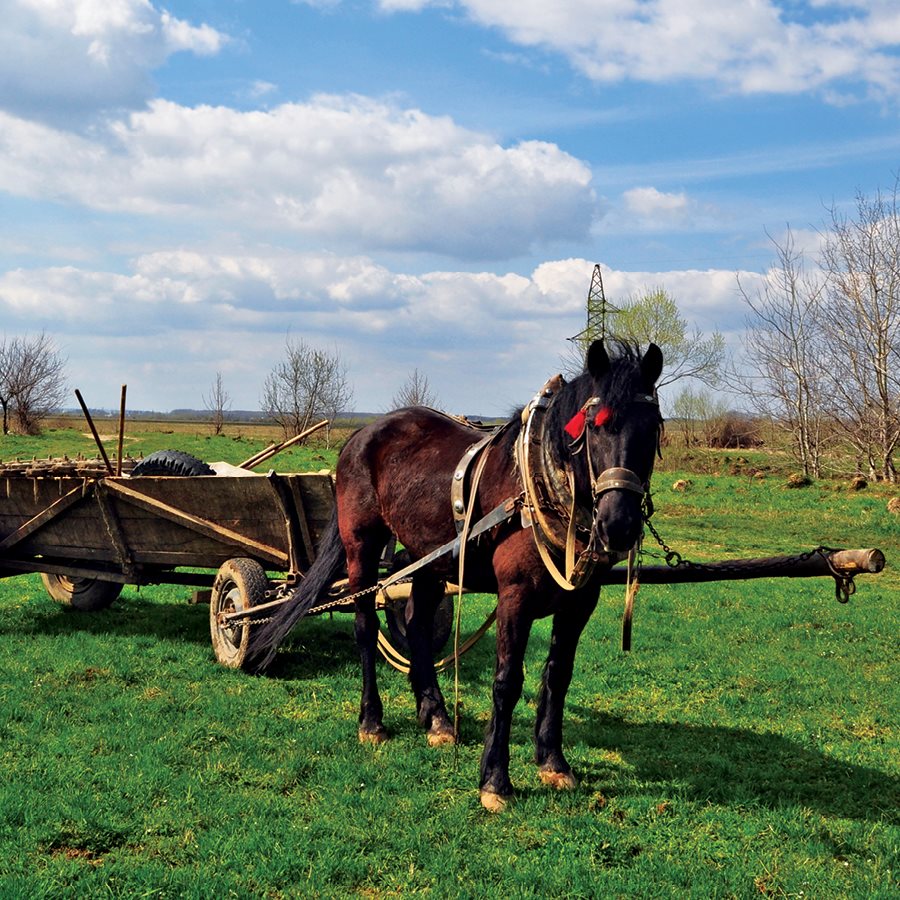
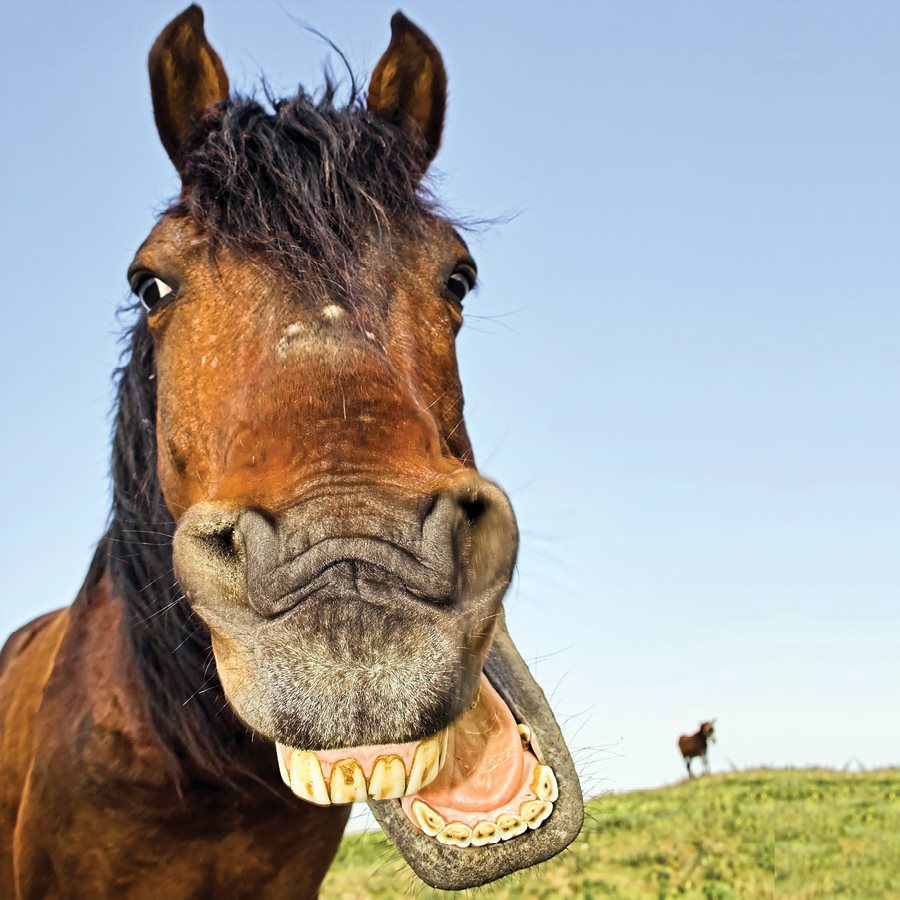

T he most accurate way to tell a horses age is by looking at its teeth and gums. This is why we use the expression from the horses mouth, which means from the original source. It would not be a good idea for you to guess a horses age by opening its mouth. Unless youre an expert, you may be bitten.
A horses mouth is full of strong teeth used mostly for chewing and grinding grasses. Baby horses, called foals, have a full set of milk teeth when they are about nine months old, just like your baby teeth. Gradually the foals lose their milk teeth and grow permanent teeth. Over time, they wear down and change in shape and color and are then replaced by more teeth erupting from the jaw.
Font size:
Interval:
Bookmark:
Similar books «Horses»
Look at similar books to Horses. We have selected literature similar in name and meaning in the hope of providing readers with more options to find new, interesting, not yet read works.
Discussion, reviews of the book Horses and just readers' own opinions. Leave your comments, write what you think about the work, its meaning or the main characters. Specify what exactly you liked and what you didn't like, and why you think so.

